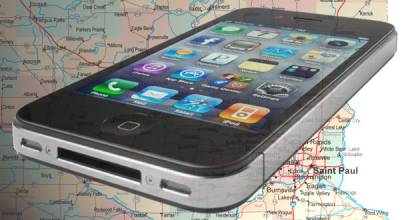Airspace is subject to the territorial sovereignty of the respective underlying state, and that state can therefore exercise a level of discretion in prohibiting or conditioning activities in that area which is only limited by international obligations resting upon that state – for instance, following certain international aviation treaties. The only exception here concerns airspaces over international waters, for which the 1944 Chicago Convention provides a general solution regarding the regulation of aviation for safety purposes. In general, as a consequence the use of GNSS and their services in the context of aviation is dealt with by air law, national as well as international, as a body of law principally regulating activities in airspaces, national as well as international.
Outer space, by contrast, is defined as an area not subject as such to any territorial or quasi-territorial sovereignty, a virtual “global commons”, where the freedom of use and exploration is the baseline legal principle and such freedom can only be curtailed, at the international level, by applicable international (space) law. This principle has been codified in the 1967 Outer Space Treaty, to which all important spacefaring nations are party. The Outer Space Treaty at the same time provides for a first embryonic set of international obligations resting upon states which limit the baseline freedom of use and exploration, while several other space treaties as well as customary international law and more general treaties which impact outer space and space activities provide for further limitations. This is what is commonly labeled “space law”, a body of (in first instance international) rules addressing such space activities. Only at a secondary level, national law or (in the case of the European Union) EU law plays a role, partly in implementing and applying the international regime in a national respectively EU context.
When analyzing to what extent space law has an impact on GNSS, furthermore, we should realize that GNSS from an overarching legal perspective comprises five main elements: (1) ground stations controlling by way of (2) radio signals (3) the satellites launched into and then operating in outer space, emitting (4) the position, navigation and timing (PNT) signals allowing (5) relevant receivers to calculate positioning and navigation information.
Elements (1) and (5) are not generally considered to be a subject which space law should regulate, as they fall completely within the sovereign jurisdiction of whatever state the ground stations respectively receivers find itself in. For the sake of simplicity, any receiver infrastructure in outer space is not further discussed in the contribution, whereas any similar receiver infrastructure in airspace is subsumed within the concept of receivers as it is legally subject to the same territorial jurisdiction (as further regulated internationally by air law).
Elements (2) and (4), which at least in part traverse outer space on their way to respectively back from the satellites, are effectively dealt with already by an international body of law dealing with all communications, not with space communications only; hence these will not be dealt with in any detail here.
For completeness’s sake, suffice it here to point to the International Telecommunication Union (ITU) which, in a legal sense, operates on the basis of the ITU Constitution, the ITU Convention, and whatever is the most recent version of the Radio Regulations, listed in Additional Resources near the end of this article. Once it had become clear that satellites could be integrated in the international infrastructure for communications in the late 1950s, it was agreed that the ITU presented the obvious forum to address these issues as it had since decades already addressed the issue of potential interference on the international level, by developing and implementing an elaborate system of coordination of frequency use. The ITU’s legal involvement with satellites, including GNSS, remains limited however to such coordination of frequencies and attendant orbits.
That leaves most prominently element (3) to be subject to space law. Following primarily from the aforementioned Outer Space Treaty and two of its successor treaties, the 1972 Liability Convention and the 1975 Registration Convention (See Additional Resources), the following fundamental legal rules and obligations would then arise which are of particular importance for GNSS.
Freedom of Use and Exploration for the Benefit of All Mankind
This principle notably emanates from Articles I and II of the Outer Space Treaty, and would generally include the use of satellites for positioning, timing and navigation purposes. The limits to this freedom under the Outer Space Treaty are fairly limited, and remain essentially confined to an obligation to comply with general international law as applicable (Article III, Outer Space Treaty, which specifically references the UN Charter), to undertake reasonable efforts to avoid harmful interference with other legitimate space activities (Article IX, Outer Space Treaty) and to share any relevant scientific information gathered in the context of operations with the world community (Article XI, Outer Space Treaty).
Conversely, it will be clear that GNSS actually contributes – at least in principle – to the benefits of space activities for all mankind, since it allows many activities on earth or in the airspaces above it to take place safer, quicker and more efficiently. This would apply in particular, of course, to the extent the GNSS signals would be openly and freely available – which currently is the case with GPS and GLONASS Standard Positioning Signals, whereas also BeiDou and Galileo plan to offer such openly and freely accessible signals. The only exceptions would be where GNSS would be used, for instance, for supporting the unlawful use of force, so as to violate Article III of the Outer Space Treaty. This would mainly refer to the use of force other than in the exercise of the right of self-defense (Article 51, UN Charter) or following a mandate of the UN Security Council (Article 42, UN Charter).
Responsibility of States for National Activities in Outer Space
This responsibility also pertains to the operation of GNSS satellites. If such satellites are involved in activities violating the rights of other states (such as referenced above), it will be the state or states as whose “national activities” these operations qualify, which will be held responsible under international law (Article VI, Outer Space Treaty). Such violations would then give rise to a requirement for the violating state(s) to remedy the situation and as appropriate apologize, punish responsible operators and/or provide assurances that such violations will not occur again. This is independent from the occurrence of actual damage, which may in addition give rise to obligations to compensate for such damage, even beyond the particular concept of liability dealt with below. Thus, the United States would be responsible for GPS operations, the Russian Federation for GLONASS operations, and the People’s Republic of China for BeiDou operations.
Since such state responsibility also pertains to satellite operations conducted by private operators, any future private operator of Galileo pursuant to a concession would also give rise to the responsibility of the state(s) as whose “national activities in outer space” such operations would qualify. The idea of having Galileo operated under a concession, as originally intended by the European Commission, turned out to be premature, but it cannot and is not excluded that in the future this may change.
While the EU is in the political and financial lead when it comes to Galileo, and the European Space Agency (ESA) has been the initial developer in a technical and operational sense, pursuant to Articles VI and XIII of the Outer Space Treaty such international responsibility ultimately rests with the member states, or at least with the member states which are involved specifically in the Galileo programs. To what extent the seat of the European GNSS Agency (GSA), the hosting of ground stations for the purpose of Galileo, or relative investments into Galileo might cause for specific responsibility of specific member states is an issue for internal considerations; any third state complaining about any perceived illegality of Galileo operations would in principle have the choice to address any such complaints against any of the EU and ESA member states.
Article VI of the Outer Space Treaty furthermore requires the “appropriate State” to ensure “authorization and continuing supervision” of non-governmental entities. As long as Galileo operations would remain the domain of the GSA, as an agency of the European Commission, Articles VI and XIII would allow the European Union to effectively exercise such control over Galileo operations. As soon as, however, a private concessionaire were to take over as operator, one or the other EU/ESA member state would have to step into the breach to ensure the aforementioned “authorization and continuing supervision”, even if in practice the EU/GSA could still be used as the “tool” to achieve that aim.
Liability of States for Physical Damage Caused by Space Objects
Pursuant to this principle, although following a different scheme of attribution based on fundamental involvement with the launch of the space objects concerned (namely that of the so-called “launching State” of the space object at issue; Article VII, Outer Space Treaty; Articles I, II & III, Liability Convention), states are not only responsible but also liable for physical damage caused by space objects. Such damage would then give rise to an obligation to compensate for the damage, which is fault-based only to the extent that damage is caused to other space objects (Articles II & III, Liability Convention) and is in principle without limit (Article XII).
In other words, if a GPS satellite would crash into another space object, the United States would be held liable for the damage caused thereby to the extent the crash would be considered its fault; if the damage by contrast would take place on earth or to aircraft in flight, the United States would be held liable without further ado. The same obviously would apply for the Russian Federation with respect to GLONASS and the People’s Republic of China with respect to BeiDou.
It is important to note here, that damage is defined, following the general interpretation of the Liability Convention, as direct damage caused by physical impact, meaning that non-physical damage such as radio interference or indirect damage – an aircraft crashing as a consequence of erroneous GNSS information; loss of revenues due to interference – are not compensable. In the context of discussions within the International Civil Aviation Organization (ICAO), for instance, the United States has consistently denied any liability for damage which users of GPS signals or services could suffer due to their trust in those signals or services being unwarranted. Only exceptionally it has been claimed by authors that liability for signals and services emanating from GNSS satellites could be equated to “damage caused by the satellites”, and hence be subject to liability claims pursuant to the Liability Convention. In the US case, it has only been admitted that under particular circumstances liability claims against the US government could be entertained in US courts, to the extent that the Federal Tort Claims Act or Suits in Admiralty Acts might be invoked.
Victims of such types of damages should therefore seek compensation either under the heading of state responsibility as addressed above or in a private capacity in a relevant national court.
Again, international liability also applies for privately-owned and/or -operated GNSS systems; a possible future private concessionaire operating Galileo would thus only be held liable to the extent the states themselves liable would derogate such liability under the concession. While the Liability Convention in this respect offers intergovernmental organizations the opportunity to qualify as a state party to the Convention for practical purposes (Article XXII, Liability Convention), ESA has so far complied with the relevant conditions but not the EU. Even to the extent ESA would be held liable for damage caused by Galileo (due to its initial involvement in system launch and deployment), ultimately the burden of compensation would come to rest upon the ESA member states.
As for the EU, due to absence of its qualification pursuant to Article XXII of the Liability Convention as a de facto party to its regime, legally speaking it is an “invisible” entity. Asserting a claim for damage caused by Galileo and otherwise falling within the scope of the Liability Convention against the EU or the EC consequently would not be legally possible – instead, if the victim state(s) would not favor addressing ESA as per the aforementioned option, the only option left would be to address individual EU member states who could all, legally-technically speaking, be argued to be procuring states (Article I(c)(i), Liability Convention) of the Galileo satellite in question and hence liable.
At the same time, it should be noted that in the Galileo context a substantial element of the proposed package of paid services (as opposed to the open GPS services for which no liability could unequivocally be claimed) would be the inclusion of liability acceptance on the part of the operator. To the extent this approach were to become accepted, users who would rely on Galileo services which would then turn out to be erroneous (hence such reliance would in hindsight be unjustified) and as a consequence cause damage to third parties, would be able to derogate the relevant third-party claims to the Galileo operator. An example on point would be an aircraft crashing as a consequence of malfunctioning of a Galileo service: the derogation of liability would allow the airline to shift the burden of any third-party liability claim under applicable air law treaties ultimately to the Galileo operator.
Registration of Space Objects by States Involved in their Launching
Closely related to the international regime on liability summarized above, states are also required to register – at least in principle – the space objects for which they qualified as “launching State(s)”. This registration obligation is actually twofold. On the one hand, states need to register such space objects in a national register, the details of which are further left to the state of registry (Article II(1), Registration Convention). On the other hand, they are required to provide the United Nations with a specific set of data for the purpose of inclusion in the international register (Articles III, IV, Registration Convention).
Unfortunately, the latter obligation is qualified as “as soon as practicable” (Article IV(1), Registration Convention); coupled with the principled absence of an international monitoring organization, effectively this means that many satellites do not get registered at all (in particular if military in nature).
A further problem concerns the impossibility – at least formally, as per the Registration Convention, to “unregister” or “deregister” satellites. The assumption had simply been that satellites, once launched, would be owned and operated by their principal owner until their end-of-life, so the possibility of change of ownership in-orbit was never seriously contemplated.
Since the possibility of more than one state qualifying as a launching state is real, in view of the four alternative criteria for that, in relevant cases those states should determine which one of them is to fulfill the functions pursuant to the Registration Convention – double registration is legally speaking not possible (Article II(2), Registration Convention).
Clearly, following the above, the United States, the Russian Federation and the People’s Republic of China are required to register the satellites composing their respective GNSS. A final point of note concerns the fact that, while GPS, GLONASS and BeiDou are obviously multi-satellite systems, pursuant to the Registration Convention each individual launch carrying one or more satellites is registered individually – the main concern driving the registration regime was the launch phase as deemed the by far most risky and accident-prone.
As for Europe, though similarly to the Liability Convention under the Registration Convention the possibility is open for an intergovernmental organization to become a “party” to the Convention for all practical purposes exists (Article VII, Registration Convention), again only ESA, not the EU has qualified as such. Any EU “register” of Galileo satellites, if ever contemplated, would not have any legal meaning pursuant to the Registration Convention; (Note that in an effort to provide as much relevant identification-related information to the general public, the UN Office for Outer Space Affairs will include any such information provided by the European Union in the international register between brackets, to distinguish it from information provided formally in accordance with the Registration Convention.) The absence moreover of a possibility to register such satellites in two or more states at the same time (Article II(2), registration Convention) also principally excludes such a register under the Convention. Galileo satellites, consequently, could be registered either by ESA or by any EU member state qualifying as the launching State.
At least to the extent Galileo satellites are launched from Kourou on Ariane launchers, France would be the logical launching state, as the use of its territory and launch facilities for the launch would most unequivocally qualify it as a launching state – much more so than, for instance, Germany or Italy where the main control centers are hosted. In practice, as it turns out, ESA registered the GIOVE satellites in 2005 and 2008; the Galileo IOV and Galileo satellites launched from 2011 onwards, however, were not officially registered with the United Nations, also raising legal questions regarding jurisdiction and control at least under international law (Article VIII, Outer Space Treaty). For more details on this, see Additional Resources.
Mitigation of Space Debris
The issue of space debris is not yet formally dealt with by the space treaties in any relevant detail: the provision coming closest to addressing the issue concerns that which requires a state which “has reason to believe that an activity or experiment planned by it or its nationals in outer space (…) would cause potentially harmful interference with activities of other States Parties in the peaceful exploration and use of outer space, including the Moon and other celestial bodies” to “undertake appropriate international consultations before proceeding with any such activity or experiment” (Article IX, Outer Space Treaty). Vice versa as per the same Article, a state potentially victimized by such harmful interference may require consultations – yet there is not obligation not to create any space debris, let alone to clean up one’s own or indeed any space debris already out there.
In that sense, the only remaining support coming directly from the space treaties of relevance here would be the inclusion of space debris in the concept of “space object”, which means that damage caused by space debris under the Liability Convention would give rise to compensation – on the assumption, of course, that the launching state of that space debris could (still) be identified.
Only recently legal developments have started to address the problem of space debris more profoundly. Partly in further elaboration of the aforementioned Article IX of the Outer Space Treaty, the major space agencies gathered together in the Inter-Agency Space Debris Coordination Committee (IADC) in 2002 drafted a first set of (legally non-binding) Space Debris Mitigation Guidelines, which has been further buttressed by a relevant set of UNCOPUS guidelines in 2010. Those guidelines may well develop into customary international law over the coming years, in particular as increasingly individual states licensing private operators include compliance with the guidelines in the conditions for being granted a license to undertake space activities in the first place – which is certainly binding upon those licensees. Of the countries concerned with GNSS, at least for the United States and the member states of ESA (which is a prominent member of the IADC) this holds true, which means such principles will also be applied at least to GPS- and Galileo-related launches.
In Conclusion
While it is clear that GNSS constitutes one of the most beneficial space operations and space-based applications, the legal regime pursuant to international space law remains fairly general and limited in its specific guidance of such operations and activities. Partly that is due to a general lack of political awareness of the relevance of compliance with such issues as registration and space debris, which would hopefully change as more and more terrestrial users become dependent upon satellite navigation services. Partly it is due to the remaining crucial impact of national sovereignty in this particular field of international law; the absence of sovereign control by other states than the GNSS operator states over the applications on their territory or within their airspace and the potential consequences in terms of liability understandably causes a considerable amount of hesitation in allowing to reap the full potential benefits of GNSS.
In Europe, with respect to Galileo, the legal situation is even more wanting. While ESA is able to register satellites and has actually done so with the first few launched, the leading position that the EU has increasingly taken in this respect has not yet translated into properly addressing such issues – neither have, probably as a consequence of the Union’s lead role, individual EU/ESA member states such as France, Germany or Italy. Thus, even at the level of the fairly succinct body of international space law, much still needs to be done to arrive at a proper legal framework properly implemented.
Additional Resources
[1] Charter of the United Nations (UN Charter), San Francisco, done 26 June 1945, entered into force 24 October 1945; USTS 993; 24 UST 2225; 59 Stat. 1031; 145 UKTS 805; UKTS 1946 No. 67; Cmd. 6666 & 6711; CTS 1945 No. 7; ATS 1945 No. 1.
[2] Constitution of the International Telecommunication Union (ITU Constitution), Geneva, done 22 December 1992, entered into force 1 July 1994; 1825 UNTS 1; UKTS 1996 No. 24; Cm. 2539; ATS 1994 No. 28; Final Acts of the Additional Plenipotentiary Conference, Geneva, 1992 (1993), at 1.
[3] Convention of the International Telecommunication Union (ITU Convention), Geneva, done 22 December 1992, entered into force 1 July 1994; 1825 UNTS 1; UKTS 1996 No. 24; Cm. 2539; ATS 1994 No. 28; Final Acts of the Additional Plenipotentiary Conference, Geneva, 1992 (1993), at 71.
[4] Convention on International Liability for Damage Caused by Space Objects (Liability Convention), London/Moscow/Washington, done 29 March 1972, entered into force 1 September 1972; 961 UNTS 187; TIAS 7762; 24 UST 2389; UKTS 1974 No. 16; Cmnd. 5068; ATS 1975 No. 5; 10 ILM 965 (1971).
[5] Convention on Registration of Objects Launched into Outer Space (Registration Convention), New York, done 14 January 1975, entered into force 15 September 1976; 1023 UNTS 15; TIAS 8480; 28 UST 695; UKTS 1978 No. 70; Cmnd. 6256; ATS 1986 No. 5; 14 ILM 43 (1975).
[6] Radio Regulations Articles, Edition of 2016 (Radio Regulations).
[7] Treaty on Principles Governing the Activities of States in the Exploration and Use of Outer Space, including the Moon and Other Celestial Bodies (Outer Space Treaty), London/Moscow/Washington, done 27 January 1967, entered into force 10 October 1967; 610 UNTS 205; TIAS 6347; 18 UST 2410; UKTS 1968 No. 10; Cmnd. 3198; ATS 1967 No. 24; 6 ILM 386 (1967).
[8] United Nations Office of Outer Space Affairs; see here; search “Galileo”.





